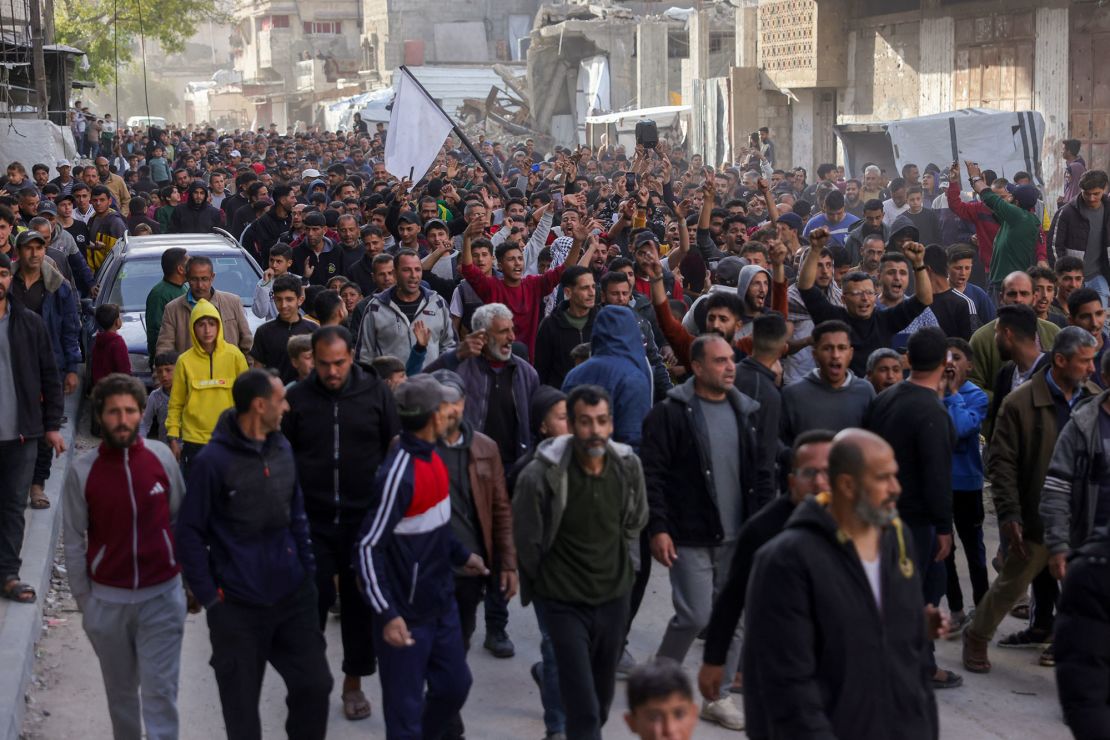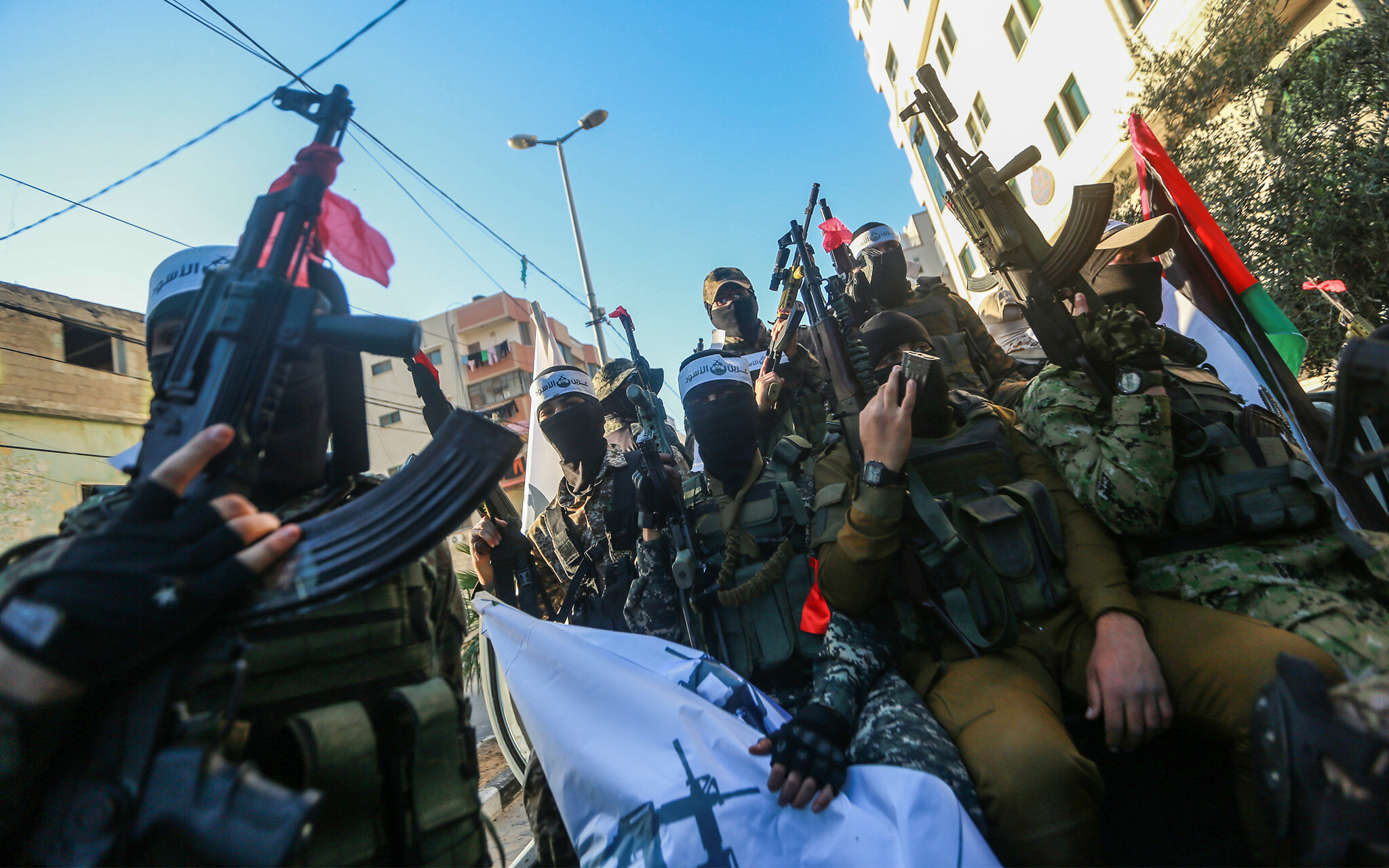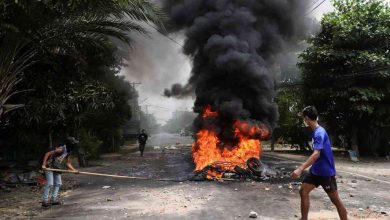Why Palestinians Demand “Hamas Out” Amid Crisis
A rare rebellion in Gaza reveals deep fractures with lasting echoes.

On March 2025, the streets of northern Gaza pulse with a sound rarely heard: hundreds of Palestinians chanting “Hamas Out!” This isn’t a whisper of dissent—it’s a roar, cutting through 17 years of Hamas rule. Videos from Beit Lahiya, authenticated by Reuters and AP News, show crowds wielding signs: “Stop the war,” “We refuse to die.” The numbers stun—over 50,000 Palestinians dead since October 2023, per Gaza’s Health Ministry, and now this. A people crushed by war and blockade are turning on their own rulers.
This isn’t just a protest. It’s a seismic shift in Middle East tensions, exposing a fault line with ripple effects for Palestine, Israel, and the region. Hamas, the militant group that seized Gaza in 2007, faces its boldest internal challenge yet. Why now? What’s driving this? And what does it mean for a conflict that’s already a global flashpoint? Let’s dig in—stats, voices, and hard truths ahead.
The Breaking Point: War’s Toll Fuels Rage
Gaza’s numbers tell a brutal story. The war sparked by Hamas’s October 7, 2023, attack on Israel—killing 1,218, per AFP—has left the enclave in ruins. Israel’s retaliation has killed 50,021 Palestinians, mostly civilians, says Gaza’s Health Ministry (March 23, 2025). That’s 2.4% of Gaza’s 2.1 million people—equivalent to 8 million U.S. deaths in scale. Add 70% of buildings destroyed (UN estimates) and a humanitarian collapse: no food, no fuel, no hope.
Then came March 18, 2025. Israel resumed strikes after a six-week ceasefire, targeting Hamas but hitting civilians hardest. Nearly 700 dead in days, mostly women and children, per Palestinian health officials (Reuters, March 26). New evacuation orders displaced thousands again. “All Gaza is in ruins,” one protester told Reuters. “Where to go?”
This is the spark. Palestinians aren’t just mad at Israel—they blame Hamas for starting a war they can’t win. “Hamas launched October 7, and today we pay the price,” Belal Abu Zaid told CNN (March 26). Polls back this up: the Palestinian Center for Policy and Survey Research (PCPSR) found Hamas support in Gaza at 35% in September 2024, down from 38% three months prior. War fatigue is real—and it’s turning inward.
Hamas Out: A Protest Born of Desperation
The protests erupted March 25 in Beit Lahiya, spreading to Deir al-Balah by March 26. Hundreds marched—some say thousands, per CNN’s on-ground estimates—chanting “Out, out, out, Hamas out!” and “Hamas terrorists.” Signs screamed defiance: “The blood of our children is not cheap.” Hamas gunmen, usually quick to crush dissent, stepped in late—dispersing crowds with batons, per BBC (March 26). No arrests, though. That’s telling.
Why so bold? Hamas police vanished after Israel’s renewed offensive, says Reuters. The group’s grip weakened as airstrikes drove it underground. “Hamas can’t fight Israel, impose calm, or provide essentials,” says Akram Atallah, a Gaza-born analyst in London (NPR, March 26). People seized the gap. “We refuse to die for anyone’s agenda,” protester Mohammed Diab told BBC.
This isn’t new resentment. A 2019 protest against Hamas taxes was beaten down, per NPR. But today’s scale dwarfs it. Telegram calls for nine more rallies on March 27 surfaced, per France24—organizers unknown. “Our voices must reach the spies who sold our blood,” one post read. Gaza’s streets are boiling over.

Hamas’s Rule: A 17-Year Iron Fist Cracks
Hamas took Gaza in 2007, ousting rival Fatah after winning 2006 elections. It’s ruled alone since, blending Islamist ideology with militancy. The U.S., EU, and Israel call it a terrorist group; many Palestinians see it as resistance. But cracks show. PCPSR’s 2024 data pegs Gaza’s Hamas support at 35%, with 26% backing Fatah. That’s a tight split in a war zone where dissent means risk.
Hamas’s record is grim. It sparked wars in 2008, 2014, and 2023—each deadlier. The October 7 attack aimed to jolt the Palestinian cause, says Hamas leader Yahya Sinwar (NYT, October 2024). Instead, it brought hell: 50,000 dead, 1.9 million displaced (UN, March 2025). Israel’s blockade, tightened since March 2, starves Gaza—aid trucks halted, per CNN. Hamas denies stealing aid, but locals like Raed Abu Hamouda disagree: “They don’t listen to us” (CNN, March 26).
Senior Hamas official Basem Naim defends the group: “People have the right to cry out in pain,” he told BBC, but blamed “suspicious agendas” for protests. Fatah, from the West Bank, pounced—urging Hamas to “step aside” (France24, March 25). Internal Palestinian rivalry is heating up.
Israel’s Play: Exploiting the Divide
Israel sees opportunity. Prime Minister Benjamin Netanyahu jumped on the protests: “This shows our policy is working,” he said in parliament (CNN, March 26). His goal? Dismantle Hamas. Strikes since March 18 killed 792 Palestinians, per Gaza’s Health Ministry, aiming at militants but flattening homes. “Pressure will increase,” Netanyahu vowed (AP, March 26)—maybe even seizing Gaza land.
Israel’s long pushed Gazans to turn on Hamas. Leaflets in Hebron warned against pro-Hamas rallies (AP, October 2023). Now, with Hamas weakened, Netanyahu doubles down. But there’s a flip side: protests could complicate Israel’s narrative of a united enemy. “More Gazans understand Hamas brings doom,” Netanyahu said (NPR, March 26). That’s a crack he’ll widen.

The Numbers: A Longitudinal Bleed-Out
Let’s zoom out. The Israeli-Palestinian conflict isn’t new—decades old, rooted in 1948’s Nakba, when 700,000 Palestinians fled or were expelled (UN). Gaza’s been a pressure cooker since Israel’s 1967 occupation, worsened by Hamas’s 2007 takeover. Wars pile up: 2008 (1,400 dead), 2014 (2,200 dead), 2023-now (50,000+ dead). Each leaves Gaza poorer—GDP per capita dropped from $1,300 in 2006 to $700 in 2023, per World Bank.
Blockades choke it. Israel controls all entry-exit points, a policy tightened post-October 2023. Pre-war, 500 aid trucks entered daily (UN); now, zero since March 2. Malnutrition stalks 1.1 million Gazans—half the population—says UN (March 2025). Hamas’s rockets don’t help, but Israel’s response devastates. Case study: Beit Lahiya, 80% destroyed since 2023, per UN satellite data. Protests there aren’t random—they’re ground zero of despair.
Expert Voices: Decoding the Shift
Analysts see a tipping point. “This is the largest anti-Hamas protest since the war began,” says Sanam Vakil of Chatham House (NBC, March 27). She ties it to Israel’s ceasefire push—expired March 1—and Hamas’s refusal to release hostages. “It’s fresh pressure on Hamas,” she says. The group’s stuck: fighting Israel fails, governing Gaza crumbles.
Akram Atallah agrees: “Hamas has no choice left. People are finding strength in themselves” (NPR). But he warns—protests don’t mean Hamas is done. Loyalty lingers; 35% support isn’t nothing. Fatah’s Monther al-Hayek sees a chance: “Hamas must step aside to save us” (France24). Yet rivalries could fracture Palestinians further, says PCPSR’s Khalil Shikaki: “Unity’s a dream right now” (Economist, March 2025).
Israel’s ex-defense minister Benny Gantz, now in the war cabinet, calls it “a sign Hamas’s grip is slipping” (AP, March 26). But he cautions: “We can’t assume they’ll collapse.” The stakes? A power vacuum in Gaza could ignite chaos—or opportunity.

Regional Ripples: Middle East Watches
This isn’t just Gaza’s fight. Middle East tensions spike as allies and foes react. Iran, Hamas’s backer, vows a “strong blow” if attacked, per Supreme Leader Khamenei (Reuters, March 26). Hezbollah, Lebanon’s Iran-aligned group, clashes with Israel—two dead in Yohmor, March 22 (NPR). Protests echo beyond: Jordan saw 6,000 rally for Gaza (CNN, October 2023); Egypt sanctioned rare marches (AP, March 26).
Arab publics lean pro-Palestinian—90% reject violence but back a two-state solution, per Arab Barometer (2023). Hamas’s civilian attacks lose favor, yet Israel’s bombardment fuels rage. “Western double standards” burn, says Carnegie’s Amr Hamzawy (November 2023). If Hamas falters, who fills the void? Fatah? Jihadists? Regional powers eye the board.
What’s Next: A Fragile Future
Forecasts hinge on data. Hamas won’t vanish—35% support and armed wings endure. But protests could grow if Israel keeps striking and aid stays blocked. PCPSR predicts a 5–10% drop in Hamas backing by June 2025 if war drags on. “People want peace, not martyrdom,” Shikaki says (Economist).
Israel’s endgame? Eliminate Hamas or force a deal. Hostages—60 alive, 35 dead, per Israel (NYT, March 30)—are leverage. If protests split Gaza, Israel might push harder, risking more civilian deaths. UN warns 1.5 million could face famine by July 2025 without aid.
The wild card: Palestinian unity. Fatah’s West Bank base could broker a post-Hamas Gaza, but infighting’s likely. “A vacuum invites worse,” Vakil warns (NBC). Stakes are sky-high—Gaza’s 2.1 million hang in the balance.
Conclusion: A People’s Cry, A Region’s Test
The “Hamas Out” protests aren’t a blip—they’re a warning. Palestinians, bled dry by war and misrule, demand change. Hamas teeters, Israel presses, and the Middle East braces. Over 50,000 dead, a shattered enclave, and now this rebellion—it’s a pivot point. Will it birth a new Gaza or deepen the abyss? The numbers don’t lie, and the voices won’t quiet. Stay sharp with Ongoing Now 24.





